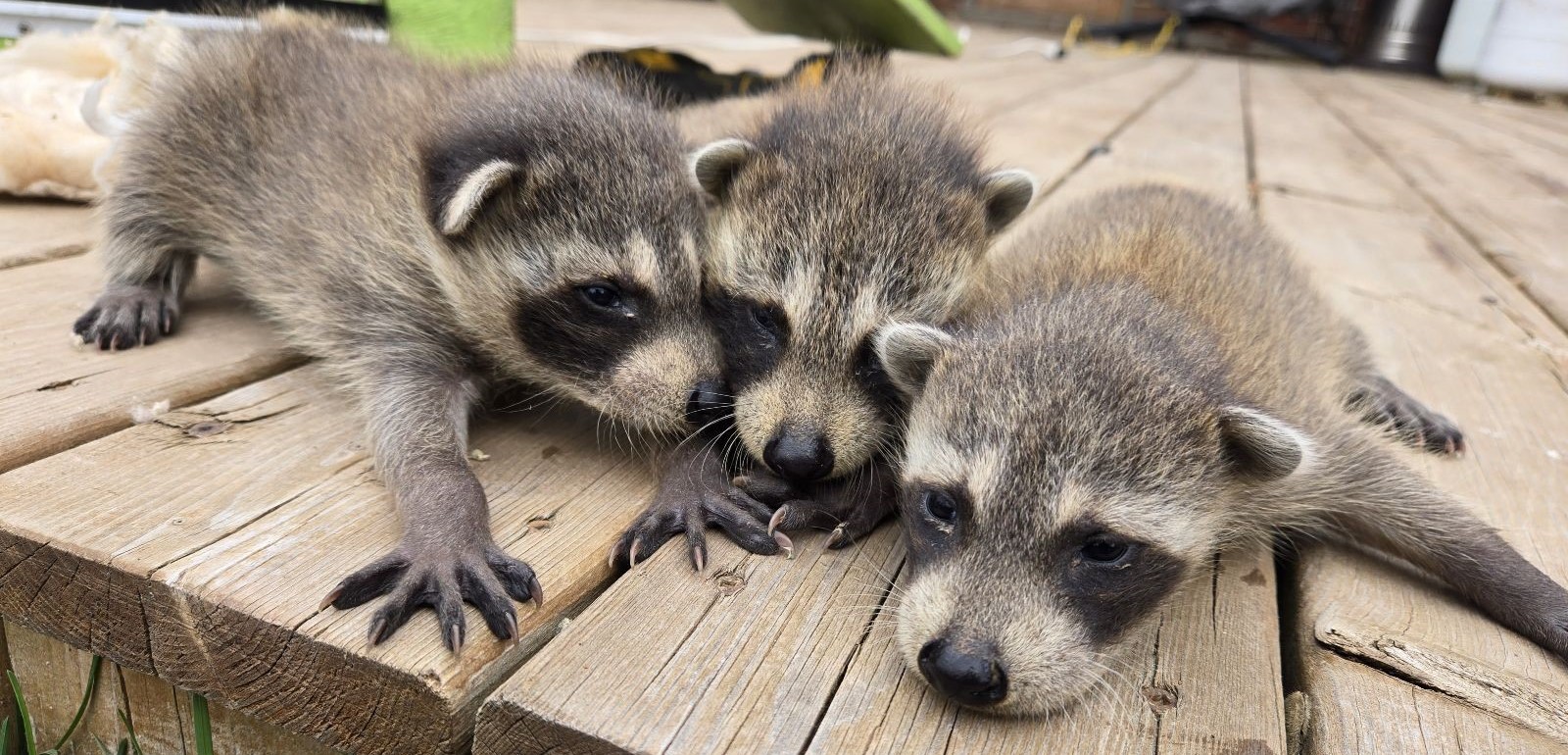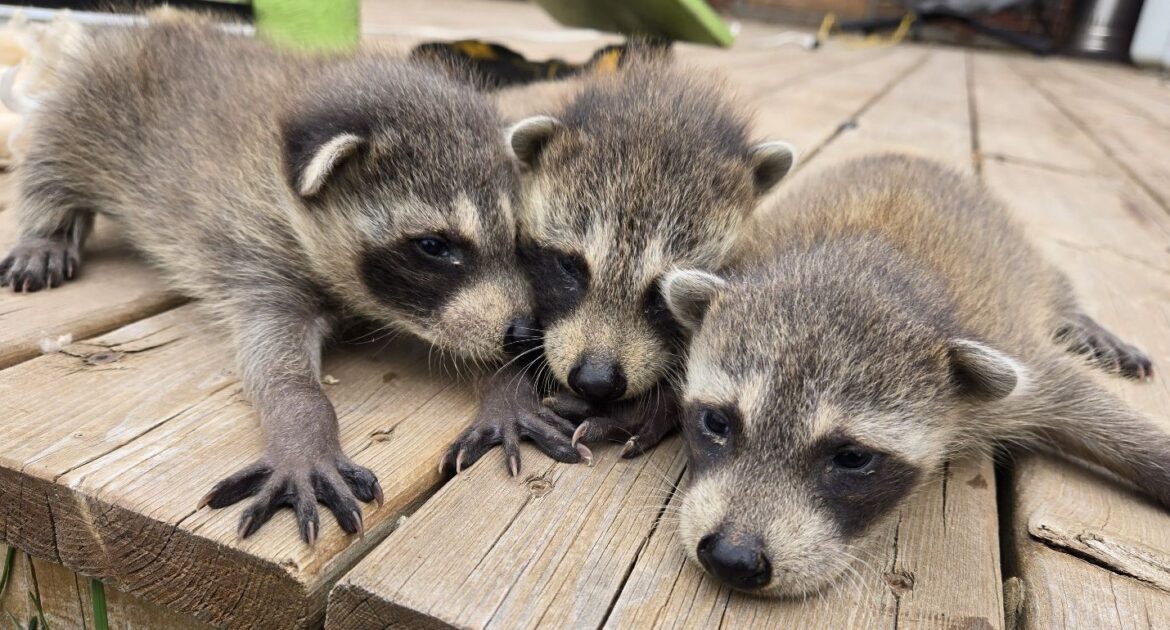At Skedaddle Wildlife Control in Mississauga, we’ve seen and learned a lot about raccoons over the years while helping homeowners with humane wildlife removal services. These resourceful animals are common visitors to urban environments across Canada and have some surprising traits you may not know about.
Below are 10 of the most fascinating facts about raccoons that you should keep in mind, especially if you’re dealing with them in your backyard or home.
10 Fascinating Facts About Raccoons
1. Raccoons Thrive in Urban Cities
Raccoons naturally come from forests and other wild habitats, but they’ve completely adapted to city life. Urban areas like Mississauga are raccoon hotspots because cities provide everything these scavengers need. From garbage bins to bird feeders, food is everywhere for raccoons, and their omnivorous diet means they can eat everything from fruits and vegetables to insects and even small animals.
Shelter is also easy to come by. Raccoons can den in attics, sheds, garages, chimneys, and under decks. If one decides to take up residence on your property, hiring professional raccoon removal is often the best choice to ensure they are relocated humanely and safely.
2. They’re Extremely Skillful
Raccoons are famous for their dexterity. Their front paws are a lot like human hands, with five fingers that allow them to grip, tear, and twist. This helps them open trash cans, pry shingles, and even manipulate objects with ease. Their paws are also highly sensitive and packed with nerves, making them highly effective for finding and handling food.
Raccoons are also great climbers. They can scale trees, fences, and the sides of buildings with ease and even climb down headfirst. Add to that their swimming abilities, which allow them to cross bodies of water or evade predators, and you’ve got one incredibly adaptable animal.
3. Raccoons Are Intelligent Problem-Solvers
Compared to most mammals, raccoons are surprisingly intelligent. Researchers have found that their IQ is just below that of monkeys. They are excellent problem-solvers and can learn from past experiences to adapt to tough situations.
This intelligence has made raccoons challenging to test in laboratory settings. They’re known for being too clever and strong-willed to follow experimental protocols. If they’ve made their way into your home or property, removing them often requires professional expertise to outwit these wily animals and prevent their return.
4. They Survive Almost Anywhere
Raccoons are incredibly resilient and can adapt to almost any environment, from tropical rainforests to freezing temperatures in Canada. Their adaptability is why you find them thriving in urban neighbourhoods, suburban yards, and even rural farmland.
Although their life expectancy in the wild is only two to three years due to predators, disease, and road accidents, raccoons in captivity can live up to 20 years. Their resilience underscores why it’s essential to address infestations quickly to limit potential damage.
5. Raccoons Communicate With Over 50 Sounds
One of the lesser-known facts about raccoons is their ability to communicate using a wide variety of noises. Researchers have identified more than 50 distinct raccoon sounds, including hissing, purring, growling, and chirping. Baby raccoons cry persistently to get their mother’s attention, while adult raccoons use squeals or barks during mating or disputes over food.
A noisy attic or yard could signal a raccoon infestation. If you hear unusual sounds at night, it might be time to contact a wildlife removal expert.
6. They Are Nocturnal But Occasionally Venture Out in the Day
Raccoons are nocturnal animals, meaning they’re most active at night. During the day, they typically rest in their dens. However, seeing a raccoon during the daytime doesn’t necessarily mean it’s rabid.
There are valid reasons for daytime activity, especially for mother raccoons. They may need to find food for their babies or protect their cubs. While daytime raccoon activity isn’t always a cause for alarm, it’s still a good idea to call a professional if you suspect they are nesting on your property.
7. Their Name Reveals Unique Traits
The scientific name of raccoons is Procyon lotor, which translates to “before-dog washer.” This refers to their peculiar habit of dipping their food in water before eating it, mimicking the motion of washing. While not every raccoon exhibits this behaviour, those in proximity to water are more likely to display it.
The word “raccoon” itself originates from the Proto-Algonquian language and means “one who scratches with its hands.” This name perfectly captures their tactile nature and the way they interact with the world.
8. Raccoons Are Solitary Yet Social
Raccoons are solitary animals, especially males, but they are still capable of social behaviour when needed. Females, for example, raise their babies alone, but they might tolerate other raccoons nearby when feeding or denning resources overlap. Male raccoons, on the other hand, tend to live solitary lives and only engage with females during the mating season.
Unlike animals like wolves or beavers, raccoons do not mate for life. Females typically have one mating partner per year, while males may seek multiple partners throughout a season.
9. Raccoons Are Surprisingly Fast and Agile
Despite their chunky appearance, raccoons are incredibly fast and nimble. They can run up to 24 kilometres per hour and climb trees just as quickly. And should they fall, raccoons are surprisingly durable, able to survive drops from as high as 35 to 40 meters.
If a predator is pursuing them, raccoons have no problem dashing up a tree or even swimming away to safety. Their agility is yet another reason why handling a raccoon issue requires skilled removal teams that understand their behaviour and movement patterns.
10. Their Presence Can Signal Trouble
Though cute, raccoons often bring trouble when they move into human spaces. They can cause extensive damage by tearing roofing materials, breaking into trash bins, and raiding bird feeders. Even worse, they carry diseases like rabies and distemper, which pose risks to humans and pets.
When dealing with raccoons, attempting DIY removal can be dangerous for both you and the animal. Instead, it’s best to rely on trained professionals who use humane removal and exclusion techniques. At Skedaddle Wildlife Control in Mississauga, we ensure raccoons are safely and permanently removed without harm.
Helping Homeowners Protect Their Property
At Skedaddle Wildlife Control in Mississauga, we’ve seen just how incredible raccoons can be. From their clever problem-solving skills to their remarkable adaptability, these animals are full of surprises. But as fascinating as they are, having raccoons on your property can lead to a host of issues, including damage to your home and potential health risks for your family.
If you’ve been dealing with raccoon activity around your property, don’t hesitate to reach out to our experienced team for help. At Skedaddle, we specialize in humane and effective wildlife removal, ensuring the safety of both your home and the animals we work with. We combine decades of experience with proven strategies to keep your property protected, so you can have peace of mind.
Curious to learn more about the wildlife living in your local area? Explore our blog for more fascinating insights about raccoons and other animals that share our neighbourhoods. What’s the most surprising fact you’ve learned about raccoons? We’d love to hear your thoughts!
Whether you need help with raccoon removal or just want to learn more, our team is here for you. Contact us today to schedule a consultation or discover how we can help you live in harmony with the wildlife around your home. Together, we can ensure a safe and balanced environment for everyone.
FAQ’s
How can I prevent raccoons from entering my home?
Raccoons are skilled climbers and problem-solvers, so start by securing potential entry points. Inspect your roof, eaves, and chimneys for gaps or damage, and seal any openings. Use capped vents and sturdy materials that raccoons can’t easily pry open. Ensure garbage is stored in raccoon-proof bins and avoid leaving pet food outdoors. Trimming tree branches near your home can also deter raccoons from accessing your roof.
What signs indicate I might have a raccoon problem?
Some common signs of raccoon activity include loud noises in the attic or walls, such as thumping or scratching, especially at night. You might also notice overturned garbage bins, muddy paw prints, or damage to vents, shingles, or insulation. If you suspect raccoons in your home, it’s best to act swiftly to prevent further damage.
Is humane raccoon removal effective?
Yes, humane raccoon removal is highly effective and aligns with ethical wildlife control practices. At Skedaddle, we use methods that prioritize the safety of both homeowners and raccoons. This includes carefully removing the animals, sealing entry points to prevent re-entry, and providing cleaning and decontamination services to restore your space. Our approach ensures long-term results without harming the animals.




